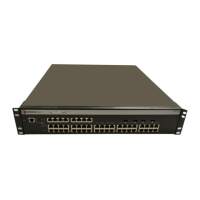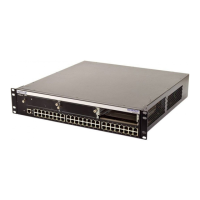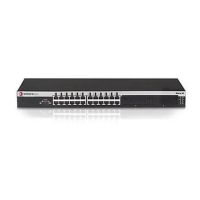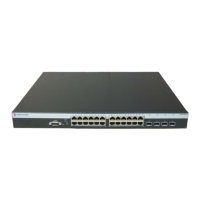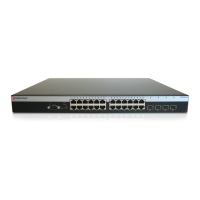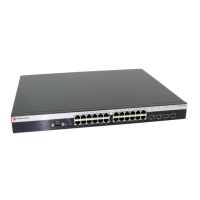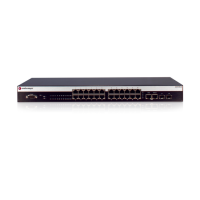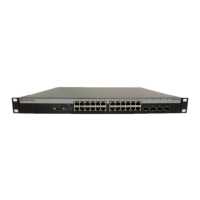Configuring Load Sharing Network Address Translation (LSNAT) show ip slb vservers
19-20 LSNAT Configuration
five 3.3.3.3 80 ten TCP 41 IS
test 192.169.10.88 80 big TCP 240 IS ftp
Thisexampleshowshowtodisplaydetailedinformationaboutthe“test”virtualserver:
Matrix Router(config)#>show ip slb vservers test detail
Virtual Server : test
Virtual Server IP : 192.168.2.2
Port : 23
Server Farm : test1
Persistence Type : TCP Level : 240
Virtual Server Protocol Type : TCP
In Service
Service Name :
client(s) allowed to use the virtual server(s)
----------------------------------------------
Virtual Server : test
Client IP/Mask : 169.254.1.1/255.255.255.0
client(s) allowed direct access to the real server(s)
--------------------------------------------------------
Virtual Server : test
Start IP to End IP : 169.254.1.1 to 169.254.1.9
Table 19‐3providesanexplanationofthedetailedcommandoutput.
Table 19-3 show ip slb vservers Output Details
Output... What it displays...
Virtual Server Name of the virtual server. Assigned using the ip slb vserver
command as described in “ip slb vserver” on page 19-21.
Virtual Server IP Address of the virtual server. Assigned with the virtual command as
described in “virtual” on page 19-22.
Port TCP or UDP port number assigned to this server.
Server Farm Name of the server farm associated with this server. Assigned with the
serverfarm command as described in “serverfarm (Virtual Server)” on
page 19-22.
Persistence Type Type of binding used and time limit to allow clients to bind to an LSNAT
virtual server. Set using the persistence level command as described
in “persistence level” on page 19-25.
Virtual Server Protocol Type Whether this virtual server is using the TCP or UDP protocol.
In Service Whether or not this virtual server is enabled (using the inservice
command as described in “inservice (virtual server)” on page 19-24).
Service Name Whether or not the service named can also be accessed through this
virtual server IP address. Configured using the virtual command as
described in “virtual” on page 19-22. Note that currently only FTP is
supported.

